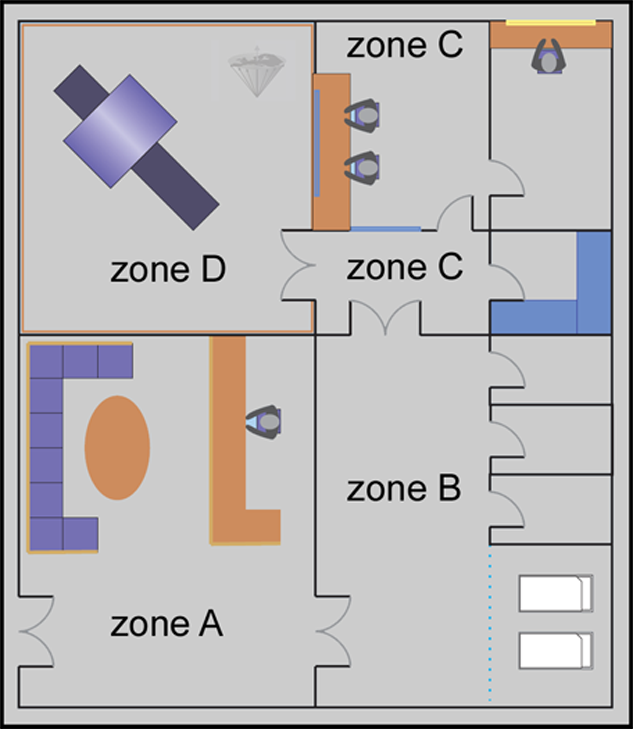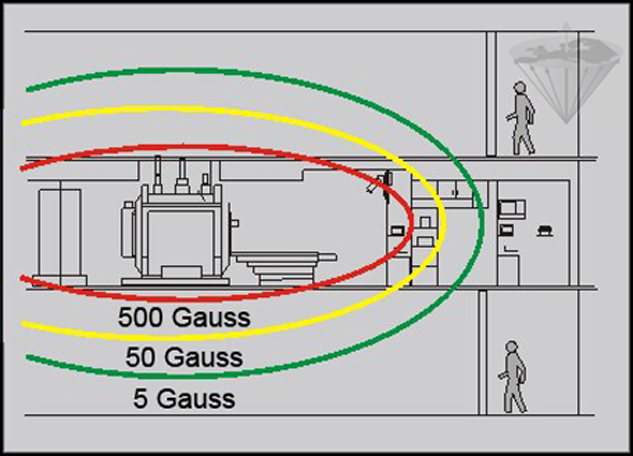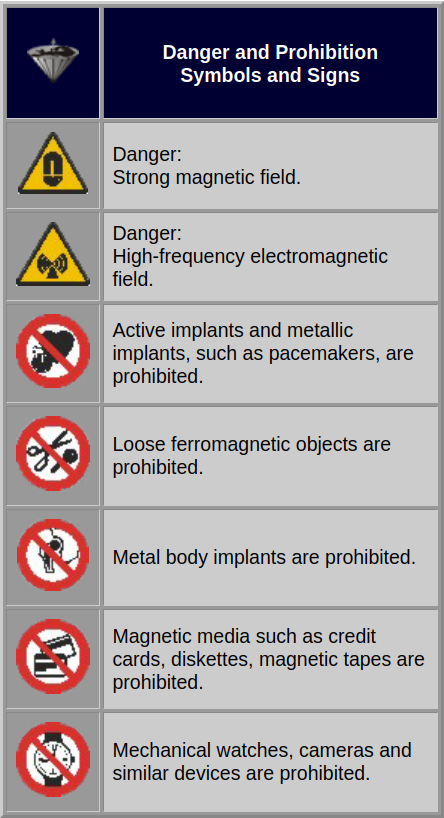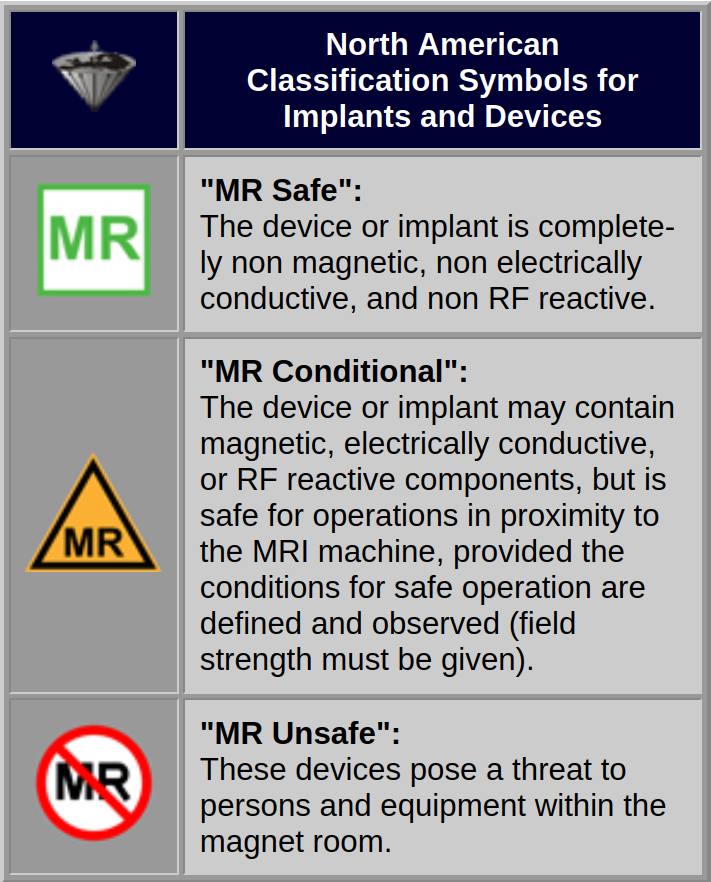





![]() ncidental hazards are created by the static magnetic field usually covering an ellipsoid region around the isocenter of the magnetic resonance machine (Figure 18-03 and Figure 18-04). The range of this fringe or stray field depends on the field strength of the system, the type of magnet, and the kind of shielding used.
ncidental hazards are created by the static magnetic field usually covering an ellipsoid region around the isocenter of the magnetic resonance machine (Figure 18-03 and Figure 18-04). The range of this fringe or stray field depends on the field strength of the system, the type of magnet, and the kind of shielding used.

Figure 18-03:
A magnetic resonance imaging site.
A — Safety zone 1: reception area;
B — Safety zone 2: patient changing and resting area;
C — Safety zone 3: control rooms;
D — Safety zone 4: magnet room.
Zones C and D are strictly off-limits to non-authorized personnel.

Figure 18-04:
The fringe field around the magnetic resonance system may stretch into adjacent rooms and floors. Never forget that the magnetic memory of credit and similar cards, as well as magnetic devices such as tapes, will be erased by MR magnets. Leave home without them or leave them outside the magnet room.
(500 Gauss = 0.05 Tesla).
The fringe field around the magnetic resonance system may stretch into adjacent rooms, floors, even gardens and parking places outside the building. It both influences electronic equipment and can be a possible hazard to persons passing by. The official 5-Gauss safety line encircles the area that pacemaker carriers should not enter. This region can stretch beyond the magnet room itself. The entrance to the magnet room should be visible to the systems operator.
Appropriate warning signs must be posted (Figures 18-05 and 18-06).

Figure 18-05:
Danger and prohibition symbols and signs used worldwide at MR installations.

Figure 18-06:
North American classification symbols for implants and devices. Signs and regulations are different in different countries or jurisdictions.
In this case, warning signs or similar notices should be displayed outside the magnet room, in neighboring rooms on the same floor, and on floors above and below. This danger has been reduced by shielded magnets.
Ultralow- and low-field magnets possess a limited stray field of sometimes less than one meter radius from their isocenter. However, the stray field of large bore, high field systems may cover a radius of 15 or 20 meters, unless the magnet is heavily shielded.
 It is of special interest for the observer and connoisseur of bureaucratic and administrative procedures that the 5-Gauss limit is ten times higher than the average earth magnetic field, but lower than the magnetic field in electric trains such as subways (up to 7 Gauss). The fields measured on the surface of the receiver of a telephone are 35 Gauss and of an audio headset 100 Gauss — and that in an electric train or car close to the engine the field strength can reach 9000 Gauss (0.9 Tesla).
It is of special interest for the observer and connoisseur of bureaucratic and administrative procedures that the 5-Gauss limit is ten times higher than the average earth magnetic field, but lower than the magnetic field in electric trains such as subways (up to 7 Gauss). The fields measured on the surface of the receiver of a telephone are 35 Gauss and of an audio headset 100 Gauss — and that in an electric train or car close to the engine the field strength can reach 9000 Gauss (0.9 Tesla).
 Constant education and training of everybody involved in MR imaging is vital. Every person working or entering the magnet room or adjacent rooms with a magnetic field has to be instructed about the dangers. This should include the intensive care staff, and maintenance, service and cleaning personnel, as well as the crew at the local fire station.
Constant education and training of everybody involved in MR imaging is vital. Every person working or entering the magnet room or adjacent rooms with a magnetic field has to be instructed about the dangers. This should include the intensive care staff, and maintenance, service and cleaning personnel, as well as the crew at the local fire station.
The best protection against this danger is not to allow personnel other than those directly involved in patient examinations, i.e., the operator and the radiologist, into the magnet room by building the room with a closed and controlled access.
As a general rule, access to the magnet room should be limited to trained personnel or to thoroughly screened patients and visitors who are accompanied by trained personnel.